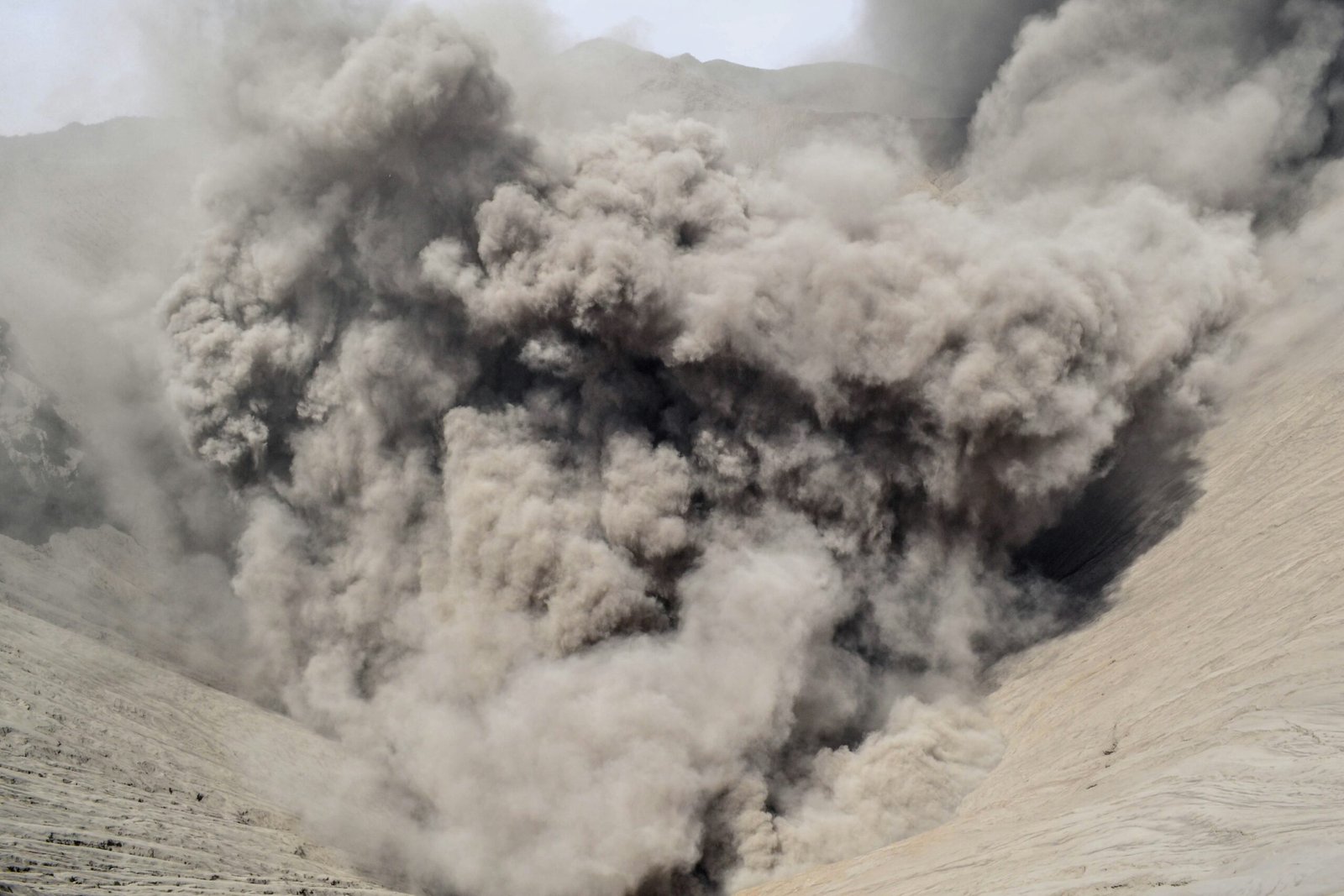Introduction:
In the annals of nuclear history, the C38 atomic bomb occupies a peculiar space – overshadowed by its more infamous counterparts like the Hiroshima or Nagasaki bombs, yet holding within its design the potential for cataclysmic devastation. This article embarks on a journey to uncover the enigmatic tale of the C38, exploring its inception, development, capabilities, and ultimate fate in the tumultuous landscape of Cold War geopolitics.
| You May Also Like USDTCCK: A Potential New Player in the Cryptocurrency Market |
The Technical Mastery: Innovations in C38 Design
Fission and Fusion Mechanisms
At the coronary heart of the C38 Atomic Bomb, extremely good adverse strength lies its modern fusion-fission hybrid layout. Unlike earlier atomic bombs that relied entirely on fission reactions to release energy, the C38 hired an aggregate of fission and fusion tactics, unlocking exponentially higher yields. The fusion degree, facilitated with the resource of the compression of fusion fuel via the power launched via the usage of the fission primary, no longer only amplified the explosive pressure but additionally allowed for the use of lighter, extra sufficient isotopes as gasoline, improving performance and reducing aid constraints.
Improved Yield and Efficiency
One of the paramount goals of the improvement of the C38 Atomic Bomb turned out to be to maximize its yield-to-weight ratio, placing touchy stability among detrimental capability and sensible deployment problems. Through meticulous engineering and computational simulations, scientists delicate the bomb’s design to acquire unprecedented stages of efficiency, ensuring that each gram of fissile material contributed to the cataclysmic launch of power upon detonation. This optimization enabled the manufacturing of warheads with formidable yields at the same time as minimizing the logistical challenges associated with their delivery and deployment.
Beyond the Blast: Environmental and Human Consequences
Ecological Fallout: Environmental Impacts
The detonation of the C38 atomic bomb now not most effective unleashed unimaginable negative strain however additionally prompted far-achieving ecological effects. The release of radioactive isotopes into the atmosphere, soil, and waterways resulted in giant contamination, disrupting ecosystems and endangering biodiversity. The prolonged-time period results of nuclear fallout persisted for decades, exerting a profound toll on the fitness and well-being of both the human and non-human populations of affected regions. The scars left through the way of those environmental upheavals function as enduring reminders of the indiscriminate havoc wrought with the aid of nuclear weaponry.
Humanitarian Fallout: Societal Impacts
Beyond the physical devastation inflicted by the useful resource of the C38 Atomic Bomb, its detonation reverberated through the material of human society, leaving indelible scars on corporations and cultures. The instant aftermath witnessed the tragic lack of life, the displacement of populations, and the erosion of social brotherly love. Moreover, the psychological trauma inflicted by using the threat of nuclear annihilation forged a protracted shadow over subsequent generations, fostering a climate of fear, distrust, and existential dread. The legacy of struggling and loss endured with the aid of survivors, known as hibakusha, serves as a poignant testimony to the human cost of nuclear war and underscores the imperative of avoiding such catastrophes within destiny.
The C38 Arsenal: Strategic Deployment and Operational Considerations
Strategic Doctrine and Tactical Deployment
The integration of the C38 Atomic Bomb into the US’s nuclear arsenal necessitated careful attention to strategic doctrine and operational strategies. Military planners grappled with questions of goal choice, timing of actions, and the sensitive balance between deterrence and escalation. The C38 Atomic Bomb’s ambitious skills endowed preference-makers with remarkable flexibility in shaping the contours of nuclear war, yet the chance of at the same time assured destruction imposed constraints on its use. As such, the deployment of the C38 remained shrouded in secrecy, its presence serving as a silent sentinel of deterrence inside the worldwide theater of geopolitics.
Delivery Systems: From Bombers to Ballistic Missiles
Central to the efficacy of the C38 Atomic Bomb as a strategic deterrent grows to be the improvement of reliable and flexible transport systems capable of penetrating enemy defenses and delivering payloads with precision and speed. Initially deployed aboard strategic bombers which include the B-52 Stratofortress, the advent of intercontinental ballistic missiles (ICBMs) ushered in a modern-day technology of nuclear war, presenting the promise of speedy, undetectable moves from around the globe. The marriage of the C38 with the one advanced transport structure imbued the USA with first-rate attain and lethality, basically reshaping the dynamics of strategic deterrence.
The C38 Saga: From Secrecy to Disclosure
Veil of Secrecy: Classification and Concealment
In the early days of its development, the C38 Atomic Bomb existed shrouded in the utmost secrecy, protected from public scrutiny via way of layers of class and compartmentalization. The veil of secrecy surrounding its layout, attempting out, and deployment contemplated the prevailing ethos of Cold War espionage and the crucial of safeguarding technological superiority. Classified files, covert studies centers, and stringent safety protocols served as bulwarks toward prying eyes, keeping the confidentiality of America’s deadliest weapon.
The Road to Disclosure: Declassification and Historical Reckoning
In the various years following the end of the Cold War, the landscape of nuclear secrecy underwent a profound transformation, as archival files were declassified, and historical narratives were reevaluated in the slight of newfound transparency. The sluggish way of declassification laid naked the internal workings of the C38 software program, illuminating its scientific achievements, strategic purpose, and moral dilemmas. Scholars and historians seized upon this trove of previously inaccessible facts, piecing together the fragmented chronicles of the C38 Atomic Bomb’s tumultuous adventure from idea to obsolescence.
The Ethical Imperative: Lessons Learned and Unlearned
Ethical Dimensions of Nuclear Warfare
The coming of the C38 Atomic Bomb nuclear bomb presented retribution with the moral components of the atomic fight, compelling policymakers, researchers, and occupants the same to stand up to the moral ramifications of saddling nuclear power for negative finishes. Discusses seethed over the reasonability of focusing on regular citizen populaces, the statute of proportionality in equipped fighting, and the holiness of human existence inside the essence of existential dangers. The apparition of atomic Armageddon strong a drawn-out shadow over the aggregate judgment of good and bad of humankind, inciting soul-looking and requires global collaboration to forestall the multiplication of firearms of mass obliteration.
Towards a Nuclear-Free Future
Right after the Virus War, endeavors to alleviate the risks presented by utilizing atomic expansion procured force, as worldwide areas wrestled with the imperative of fingers make due, demilitarization, and restraint. Deals alongside the Settlement on the Restraint of Atomic Weapons (NPT) and the Far-reaching Atomic Test-Boycott Settlement (CTBT) looked to limit the unfurl of atomic firearms and encourage an environment of straightforwardness and trust among atomic-outfitted states. In any case, the road to an atomic-free fate stays full of obstructions, as international pressures, mechanical upgrades, and philosophical contentions save to mission the open doors for enduring harmony and security.
Scientific Breakthroughs: Advancements in Nuclear Physics
Pioneering Research and Development
The improvement of the C38 atomic bomb propelled nuclear physics into uncharted territory, pushing the bounds of scientific understanding and engineering ingenuity. Groundbreaking research carried out in laboratories throughout the United States paved the way for modern improvements in nuclear fusion, substance science, and immoderate-strength physics. The collaborative efforts of physicists, mathematicians, and engineers yielded a deeper expertise of the crucial forces governing the conduct of atomic nuclei, unlocking the secrets and techniques and techniques of thermonuclear fusion and the harnessing of fusion reactions for realistic applications.
Technological Milestones and Challenges
The quest to increase the C38 atomic bomb became marked by a chain of technological milestones and formidable demanding situations. Scientists grappled with the complexities of designing and fabricating precision-engineered components capable of withstanding immoderate temperatures, pressures, and radiation stages encountered for the duration of nuclear detonations. Breakthroughs in computational modeling, materials technological know-how, and manufacturing strategies played a pivotal role in overcoming these hurdles, allowing the perception of an increasing number of sophisticated bomb designs with extra acceptable yields, reliability, and protection capabilities.
Strategic Calculus: Nuclear Deterrence and Arms Control
The Logic of Nuclear Deterrence
At the coronary heart of the Cold War nuclear method lay the concept of nuclear deterrence, predicated on the perception that the ownership of overwhelming nuclear firepower ought to dissuade adversaries from starting up hostilities. The deployment of the C38 atomic bomb reinforced the credibility of America’s nuclear deterrent posture, signaling to capability adversaries the futility of difficult U.S. Military supremacy. The doctrine of mutually assured destruction (MAD) underscored the existential risks inherent in nuclear warfare, fostering a precarious equilibrium characterized by way of a sensitive stability of terror.
Arms Control and Diplomatic Maneuvering
The specter of nuclear annihilation spurred efforts to manipulate the risks of nuclear escalation through fingers-manipulating agreements and diplomatic duties. Treaties alongside the Strategic Arms Limitation Talks and the Intermediate-Range Nuclear Forces Treaty sought to curb the proliferation of nuclear guns and reduce the risk of unintentional or deliberate nuclear war of phrases. However, the efficacy of palm control measures became often hampered by geopolitical rivalries, ideological divisions, and the imperatives of countrywide protection, highlighting the complex interaction among strategic imperatives and diplomatic exigencies.
Cultural Perceptions: Representations of the C38 in Art and Literature
Iconography of the Atomic Age
The formation of the C38 Atomic Bomb nuclear bomb introduced a spic and span time of social interest and tension encompassing the extraordinary strength of nuclear energy. Specialists, journalists, and movie producers wrestled with the existential difficulties presented with the guide of the atomic age, delivering a rich embroidery of works that considered the expectations, fears, and yearnings of nuclear innovation. From tragic dreams of the atomic end of the world to idealistic dreams of a mechanical turn of events, the social portrayals of the C38 filled in as a duplicate of society’s aggregate nerves and goals inside the shadow of the mushroom cloud.
The Legacy of Nuclear Anxiety
The legacy of nuclear anxiety spawned through the C38 atomic bomb reverberated through the cultural landscape of the 20th century and beyond, leaving an indelible imprint on well-known cognizance. The multiplication of atomic-themed writing, movies, and works of fine art filled in as a state of aggregate therapy, allowing crowds to stand up to their inward greatest feelings of dread and nerves inside the essence of existential dangers. However, even as the Virus War retreated into records, the peril of atomic Armageddon endured to hang out the aggregate imagination, helping mankind to remember the delicacy of development in the shadow of the atomic pit.
Conclusion
The C38 atomic bomb stands as a testimony to humanity’s twin functionality for clinical success and existential peril. Its development marked a watershed second within the data of nuclear war, ushering in a technology of unheard-of poor capability and geopolitical brinkmanship. Yet, its legacy extends beyond the place of military strategy and technological innovation, serving as a stark reminder of the moral dilemmas and existential risks inherent in the pursuit of nuclear strength. As we confront the traumatic situations of the twenty-first century, the training of the C38 resonates with renewed urgency, underscoring the vital of worldwide cooperation, hand manipulation, and diplomatic engagement in safeguarding the future of humanity in an uncertain international.
FAQs:
1. What is the C38 atomic bomb?
The C38 atomic bomb changed right into a thermonuclear weapon superior with the aid of America sooner or later in the Cold War generation. It represented a large advancement in nuclear weaponry, the usage of an aggregate of fission and fusion reactions to unharness devastating explosive power.
2. How powerful was the C38 Atomic Bomb in assessment to specific atomic bombs?
The C38 became one of the most effective atomic bombs ever evolved, with yields measured inside the megaton range. Its adverse skills some distance passed those of earlier fission bombs similar to those dropped on Hiroshima and Nagasaki at some point in World War II.
3. What has become the purpose of the C38 atomic bomb?
Like other nuclear guns of its time, the C38 Atomic Bomb is designed typically as a deterrent toward ability adversaries. Its large poor energy has become meant to dissuade aggression and ensure the safety of America and its allies at some point during the Cold War.











